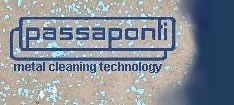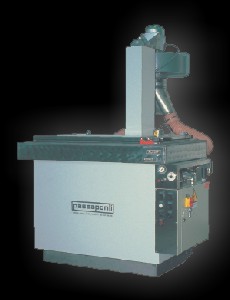
![]()

| the AGI-DIP® system | ||
AGI-DIP® |
||
top loading - with and without heating |
||
front loading with total enclosure timer controlled process cycle with and without heating |
||
| AGI-DIP® HYPER | ||
The highest performances in immersion cleaning with removal of floating oils and filtration at each cycle -with or without ultrasonics and hydro-kinetic force - fully automatic - PLC controlled |
||
| MULTI-DIP | ||
Fully automatic lines for precision cleaning and high output |
||
| MFS - Modular Flexible Systems | ||
two or more units in line form a semi automatic system combining immersion spray and drying |
||
|
||
| AGI-DIP® ULTRASON | ||
Combines mechanical agitation with ultrasonic energy Top loading or ECOMATIC |
||
Modular dryer - top loading or ECOMATIC |
||
made in Florence - Italy |
||
 |
||
AGI-DIP®
|
AGI-DIP® washers represent the most effective solution to all cleaning problems wherever a dipping process with agitation is required.
The movement of parts within the liquid reduces dramatically the wash time and improves the cleaning efficiency, without affecting negatively the duration of the cleaning media.
Designed to operate at ambient temperature or with hot liquids, the AGI-DIP® washers can be used for all surface treatments that are typical in the mechanical industry like degreasing, decarbonizing, stripping, derusting, passivation, phosphating, rinsing, protection and also as a drying unit in modular systems or automatic lines.
The operating principle is based on moving the parts inside the cleaning liquid by means of a simple and reliable air operated dunking system. A single control lifts and lowers the load platform, and produces the vertical agitation into the liquid.
AGI-DIP® washers are produced in five standard sizes and special dimensions are supplied on request. They are designed for the use with water based cleaning liquids or with non-halogenated hydrocarbons, being classified as "type A1" (machines not generating flammable vapours) according to EN 12921 part 3.
AGI-DIP® ULTRASON washers are designed to combine the mechanical agitation with the ultrasonic energy, offering the maximum of cleaning effectiveness and efficiency. Configured for ultrasounds, these washers are made from stainless steel chemical resistance and hardness as AISI 316L and DUPLEX with thermal and acoustic insulation to meet the required sound level, certified according to UNI 7712 and features to optimize the efficiency of the ultrasonic cavitation.
other sites of interest : |
|
| downloads: | |
| Cleaning after 3D PRINT | |
IMMERSION CLEANING is the process by which the parts to be cleaned are placed in the cleaning solution to come in contact with the entire surface of the parts. Immersion cleaning is preferred for parts that must be placed in baskets and for processes requiring a soaking time because of the type of contamination to be removed or the shape of the parts.
It is the most effective method, even if not the fastest one, and can be used with any type of parts and cleaner for any process, heated or at room temperature.
Performances can be improved by moving the parts within the liquid or with mechanically agitation of the liquid, or with the addition of ultrasonic energy.
3D PRINT PARTS CLEANING is carried out at room temperature followed by a water rinse to combine low cost and safety thanks to
- No flammable
- No heating
- No emissions
- Water soluble
ULTRASONIC CLEANING is carried out by adding ultrasonic energy created by means of transducers that convert electrical energy into acoustic energy and then into cavitation of the liquid.
Imploding bubbles, are the driving force of ultrasonic cleaning, with temperatures that can reach 5500°C and internal pressure generating a jet of water with a speed of 400 Km/h when meeting a surface..
The cavity size is determined by the frequency. Low frequencies generate large cavities and high frequencies generate a greater number of small cavities.
Ultrasonic energy is most commonly applied to water based detergents for the removal of tightly adhering or fine particles from solid surfaces and cleaning of parts with complex shapes.
The selection of the correct equipment and cleaning liquid varies with each cleaning application and depends on the parts being cleaned and contaminants to be removed.